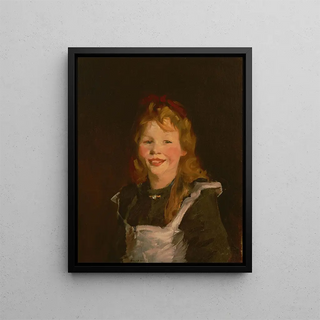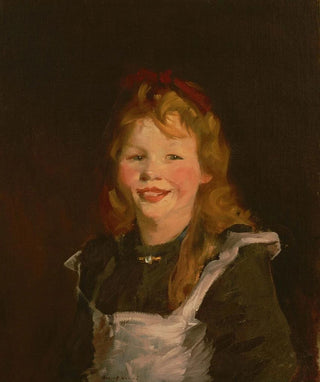Dutch Girl - Robert Henri Art print


View from behind

Frame (optional)
Reproduction of Dutch Girl - Robert Henri – Captivating Introduction
The artwork "Dutch Girl" by Robert Henri awakens in us a fascination for portraiture and the depiction of youth. This piece, emblematic of the American realist movement, immerses us in the intimacy of a young girl with delicate features, capturing not only her appearance but also a deeply human essence. Through this art print, the viewer is invited to explore the nuances of light and shadow, as well as the emotions emanating from this juvenile face. Henri, through his unique approach, manages to transcend mere portraiture to offer a reflection on identity and culture.
Style and uniqueness of the work
Robert Henri's style is distinguished by his ability to combine realism and expressiveness. In "Dutch Girl," the chosen color palette evokes a warm atmosphere, while the brushstrokes, both precise and fluid, bring the canvas to life. The composition is carefully thought out, highlighting the gaze of the young girl, which seems to engage the viewer. Henri does not merely reproduce a face; he creates an emotional connection, inviting each person to feel the depth of his subject. The piece also stands out for its treatment of light, revealing the subtleties of reflections and shadows that enrich the texture of the skin. This attention to detail, combined with a bold approach, makes "Dutch Girl" a key piece from the early 20th century.
The artist and his influence
Robert Henri, a central figure of the Ashcan School movement, played a major role in the evolution of modern portraiture. Influenced by European masters, he developed a style that is uniquely his own, marking a break from the academic conventions of his time. Henri advocated for a more direct and sincere approach to art, seeking to depict everyday life and ordinary people. His influence extends beyond his own artistic production, inspiring generations of painters to explore human truth in their works. By highlighting subjects often overlooked by artists of his era, he redefined the portrait as a means of personal and social expression. "Dutch Girl" perfectly illustrates this vision, demonstrating Henri's ability to capture the

Matte finish

View from behind

Frame (optional)
Reproduction of Dutch Girl - Robert Henri – Captivating Introduction
The artwork "Dutch Girl" by Robert Henri awakens in us a fascination for portraiture and the depiction of youth. This piece, emblematic of the American realist movement, immerses us in the intimacy of a young girl with delicate features, capturing not only her appearance but also a deeply human essence. Through this art print, the viewer is invited to explore the nuances of light and shadow, as well as the emotions emanating from this juvenile face. Henri, through his unique approach, manages to transcend mere portraiture to offer a reflection on identity and culture.
Style and uniqueness of the work
Robert Henri's style is distinguished by his ability to combine realism and expressiveness. In "Dutch Girl," the chosen color palette evokes a warm atmosphere, while the brushstrokes, both precise and fluid, bring the canvas to life. The composition is carefully thought out, highlighting the gaze of the young girl, which seems to engage the viewer. Henri does not merely reproduce a face; he creates an emotional connection, inviting each person to feel the depth of his subject. The piece also stands out for its treatment of light, revealing the subtleties of reflections and shadows that enrich the texture of the skin. This attention to detail, combined with a bold approach, makes "Dutch Girl" a key piece from the early 20th century.
The artist and his influence
Robert Henri, a central figure of the Ashcan School movement, played a major role in the evolution of modern portraiture. Influenced by European masters, he developed a style that is uniquely his own, marking a break from the academic conventions of his time. Henri advocated for a more direct and sincere approach to art, seeking to depict everyday life and ordinary people. His influence extends beyond his own artistic production, inspiring generations of painters to explore human truth in their works. By highlighting subjects often overlooked by artists of his era, he redefined the portrait as a means of personal and social expression. "Dutch Girl" perfectly illustrates this vision, demonstrating Henri's ability to capture the






